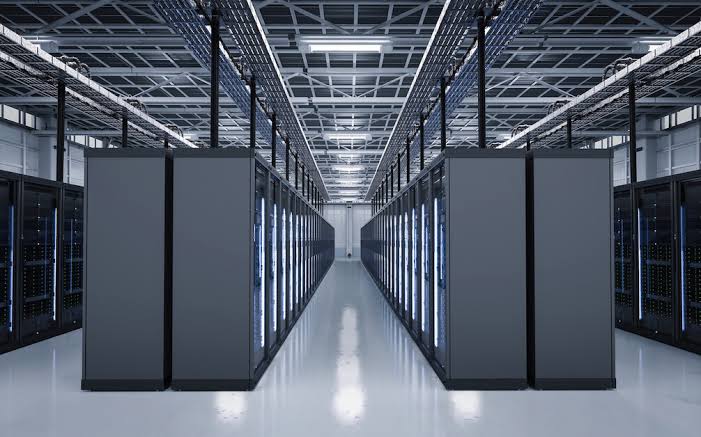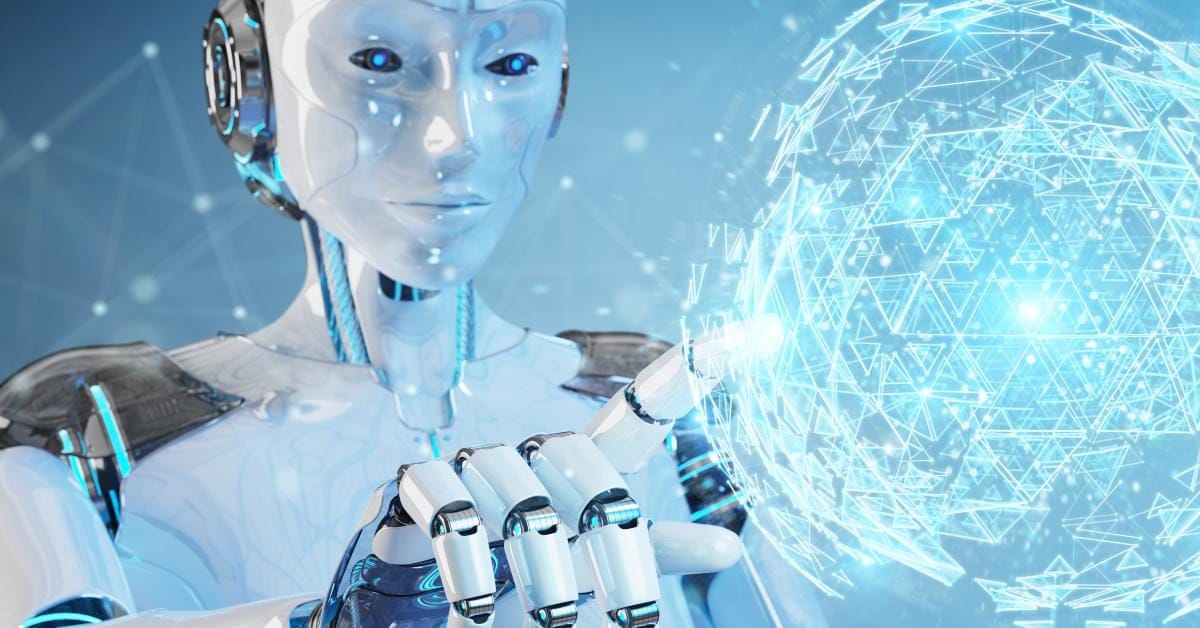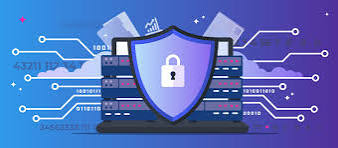
Cybersecurity in Tech Infrastructure: Protecting the Digital Backbone
Cybersecurity is the backbone of modern tech infrastructure, guarding digital systems against growing threats like data breaches, malware, and cyberattacks. With digital dependency increasing, protecting networks, devices, and sensitive data is more crucial than ever. Cybersecurity measures like firewalls, encryption, and multi-factor authentication form the first line of defense. Equally important are trained professionals and informed users who maintain vigilance against evolving threats. As t
✨ Raghav Jain

Introduction
In the digital age, technology infrastructure forms the foundation of nearly every aspect of modern life—from communication and commerce to healthcare, defense, and education. As businesses and governments increasingly depend on interconnected systems, cloud computing, and data-driven decision-making, the role of cybersecurity has grown more critical than ever. Cybersecurity in tech infrastructure is not just about protecting data—it is about safeguarding the very systems that power economies, enable daily functions, and preserve national security. Without robust protection, tech infrastructures are vulnerable to a wide range of cyber threats, including data breaches, ransomware attacks, denial-of-service incidents, and advanced persistent threats (APTs). This article explores the importance of cybersecurity in technological frameworks, the emerging threats, modern defense mechanisms, and how organizations and nations are fortifying the digital backbone of the 21st century.
In the intricate and ever-evolving landscape of the 21st century, technology infrastructure stands as the very bedrock upon which modern society functions, a complex and interconnected web that underpins everything from global commerce and critical public services to personal communication and entertainment. This digital backbone, comprising vast networks of hardware, software, data centers, and communication lines, has ushered in an era of unprecedented efficiency, connectivity, and innovation. However, this profound reliance on digital systems has also introduced a new frontier of vulnerabilities and threats, making cybersecurity in tech infrastructure not merely a desirable feature but an absolute imperative for the continued stability, security, and prosperity of our interconnected world. The protection of this digital backbone, therefore, transcends the realm of purely technical concerns, evolving into a critical strategic imperative that demands constant vigilance, adaptation, and a holistic approach encompassing technological safeguards, robust policies, proactive threat intelligence, and a culture of security awareness across all levels.
The sheer scale and complexity of modern tech infrastructure present a formidable challenge for cybersecurity. These intricate systems, often built upon a patchwork of legacy technologies and cutting-edge innovations, create a vast and diverse attack surface that malicious actors can exploit. From individual endpoints like laptops and smartphones to sprawling networks connecting organizations across continents, and the massive data centers that store and process colossal amounts of information, every component represents a potential entry point for cyber threats. The increasing adoption of cloud computing, while offering scalability and flexibility, introduces another layer of complexity, requiring organizations to secure their data and applications within shared virtual environments, often managed by third-party providers. Furthermore, the proliferation of interconnected devices through the Internet of Things (IoT) expands the attack surface exponentially, with potentially vulnerable devices embedded in everything from industrial control systems and healthcare equipment to everyday household appliances. This interconnectedness means that a breach in one seemingly minor component can have cascading effects, potentially disrupting critical services and causing widespread chaos. The threat landscape targeting tech infrastructure is characterized by its relentless evolution and increasing sophistication. Cyberattacks are no longer the sole domain of individual hackers; they are now frequently orchestrated by well-funded and highly skilled criminal organizations, state-sponsored actors, and hacktivist groups, each with their own motivations and capabilities. These adversaries employ a wide array of tactics, techniques, and procedures (TTPs), ranging from relatively simple phishing attacks and malware распространение to highly advanced persistent threats (APTs) that can remain undetected within a system for extended periods, exfiltrating sensitive data or preparing for disruptive attacks. Ransomware, a particularly insidious form of malware that encrypts data and demands a ransom for its release, has become a significant threat to critical infrastructure, as evidenced by attacks on hospitals, energy pipelines, and municipal services, highlighting the potential for real-world consequences stemming from cyber intrusions. Supply chain attacks, where adversaries compromise a trusted third-party vendor to gain access to their target organizations, have also become increasingly prevalent and difficult to defend against due to the inherent trust placed in these partners.
The potential consequences of successful cyberattacks on tech infrastructure are far-reaching and can have devastating impacts across multiple domains. Economically, breaches can lead to significant financial losses through theft of intellectual property, disruption of business operations, reputational damage, and the costs associated with incident response and recovery. For critical infrastructure sectors such as energy, transportation, and healthcare, cyberattacks can have even more severe consequences, potentially leading to power outages, transportation disruptions, and compromised patient safety, with the potential for loss of life in extreme scenarios. National security is also increasingly intertwined with the security of tech infrastructure, as state-sponsored actors may seek to conduct espionage, disrupt essential government services, or even launch cyber warfare operations targeting a nation's critical systems. Furthermore, the erosion of public trust resulting from data breaches and service disruptions can have significant social and political ramifications.
Addressing the multifaceted challenges of cybersecurity in tech infrastructure requires a comprehensive and layered approach, often referred to as "defense in depth." This strategy involves implementing multiple security controls across different layers of the infrastructure to provide redundancy and increase the likelihood of detecting and preventing attacks. At the network level, firewalls, intrusion detection and prevention systems (IDPS), and network segmentation are crucial for controlling traffic flow and limiting the impact of a breach. Endpoint security solutions, including antivirus software, endpoint detection and response (EDR) tools, and application whitelisting, are essential for protecting individual devices. Data security measures, such as encryption both at rest and in transit, data loss prevention (DLP) tools, and robust access control mechanisms, are vital for safeguarding sensitive information. Identity and access management (IAM) systems, including multi-factor authentication (MFA), play a critical role in ensuring that only authorized users have access to specific resources.
Beyond these technical controls, robust cybersecurity in tech infrastructure necessitates strong security policies and procedures. These policies should clearly define acceptable use of systems, incident response plans, data handling guidelines, and security awareness training requirements for all personnel. Regular security audits and vulnerability assessments are essential for identifying weaknesses in the infrastructure and ensuring that security controls are effective and up-to-date. Proactive threat intelligence gathering and analysis are also crucial for understanding the evolving threat landscape and anticipating potential attacks. This involves monitoring threat actors, analyzing malware trends, and leveraging security information and event management (SIEM) systems to detect and respond to suspicious activity in real-time.
Furthermore, fostering a culture of security awareness among all users is paramount. Human error remains a significant factor in many successful cyberattacks, making it essential to educate employees and other stakeholders about common threats such as phishing, social engineering, and weak passwords. Regular training and awareness campaigns can help individuals recognize and avoid these threats, transforming them from potential vulnerabilities into a crucial layer of defense. Collaboration and information sharing between organizations, industry groups, and government agencies are also vital for enhancing collective security. Sharing threat intelligence, best practices, and lessons learned can help organizations better understand and respond to emerging threats.
The increasing integration of artificial intelligence (AI) and machine learning (ML) presents both opportunities and challenges for cybersecurity in tech infrastructure. AI-powered security tools can analyze vast amounts of data to detect anomalies, identify sophisticated threats, and automate incident response processes, enhancing the speed and effectiveness of security operations. However, malicious actors are also leveraging AI to develop more sophisticated and evasive attack techniques, necessitating a continuous arms race in the development and deployment of AI-driven security solutions.
The Growing Importance of Cybersecurity in Infrastructure
In earlier times, cybersecurity was primarily considered an IT issue—something limited to protecting servers, emails, and company websites. However, the evolution of digital infrastructure has blurred the boundaries between physical systems and digital networks. Today, organizations manage hybrid infrastructures that combine on-premise data centers with cloud platforms, virtual networks, and IoT devices, all interconnected and highly vulnerable. This complexity has made cybersecurity a core strategic priority, extending beyond IT departments to boardrooms and policy makers.
For instance, a single vulnerability in a third-party vendor’s system can compromise the integrity of an entire organization’s data. Similarly, a cyberattack on critical infrastructure such as power grids, water systems, or air traffic control could disrupt essential services and endanger lives. As such, cybersecurity must be viewed as a fundamental element of operational stability and national defense.
Common Cyber Threats to Tech Infrastructure
Cybersecurity threats are constantly evolving. Attackers are using increasingly sophisticated methods to breach systems, steal data, or disrupt services. Here are some of the most prevalent threats faced by modern tech infrastructures:
- Ransomware Attacks: These involve encrypting critical data and demanding a ransom for its release. Industries like healthcare, education, and government are often targeted due to their reliance on uninterrupted access to data.
- Phishing and Social Engineering: Hackers often exploit human vulnerabilities by tricking users into providing login credentials or downloading malware through deceptive emails or websites.
- Distributed Denial-of-Service (DDoS): These attacks overwhelm servers with massive traffic to bring services down, affecting user access and damaging reputations.
- Advanced Persistent Threats (APTs): Long-term, targeted cyberattacks where an intruder gains unauthorized access and remains undetected for extended periods to steal data or sabotage operations.
- Zero-Day Exploits: Attacks that take advantage of unknown software vulnerabilities before they are patched.
Understanding these threats is essential for designing resilient security architectures that can anticipate and respond to potential breaches.
The Rise of Cloud Computing and New Security Challenges
Cloud computing has transformed how businesses store data and operate services. It offers scalability, flexibility, and cost-efficiency—but also introduces new security challenges. Cloud environments are shared infrastructures, which means that data is stored in external locations managed by third-party providers. Data breaches, misconfigured storage, and unauthorized access are common risks associated with cloud use.
To address these challenges, organizations must implement robust cloud security protocols, including:
- Strong access controls and identity management.
- Regular audits and compliance monitoring.
- End-to-end encryption.
- Multi-factor authentication (MFA).
- Secure Application Programming Interfaces (APIs).
Furthermore, companies must carefully assess cloud service providers (CSPs) to ensure they adhere to the highest cybersecurity standards, including regular vulnerability testing and adherence to global data protection regulations.
Internet of Things (IoT) and Infrastructure Vulnerability
The proliferation of IoT devices—from smart thermostats and industrial sensors to connected vehicles and smart city infrastructure—has expanded the attack surface exponentially. Many of these devices lack adequate security features and are often deployed with default passwords, making them easy targets for hackers.
IoT vulnerabilities can lead to serious consequences. For example, a compromised sensor in a smart grid could manipulate energy distribution or disable power in an entire region. To secure IoT-integrated infrastructures, developers and administrators must:
- Harden device firmware and software.
- Apply secure communication protocols.
- Enforce strong password policies.
- Continuously monitor network activity.
An IoT security framework should include segmentation, ensuring that compromised devices cannot provide a gateway into critical systems.
Strategies for Building Cyber-Resilient Infrastructure
To effectively protect technological infrastructure, cybersecurity must be integrated at every level—from software development and hardware procurement to user training and executive decision-making. Key strategies include:
1. Zero Trust Architecture (ZTA)
The traditional model of trusting internal users and devices is no longer sufficient. Zero Trust assumes that no user or device should be automatically trusted, even inside the network. Instead, every access request is verified based on identity, location, behavior, and device status.
2. Endpoint Detection and Response (EDR)
EDR systems provide real-time visibility into endpoints (like laptops, servers, mobile devices), enabling rapid detection and containment of threats.
3. Security Information and Event Management (SIEM)
SIEM platforms collect and analyze log data from various sources to detect unusual patterns and trigger alerts. These are crucial in identifying potential breaches early.
4. Encryption and Data Loss Prevention
Sensitive data—whether at rest, in transit, or in use—must be encrypted. Data Loss Prevention (DLP) tools ensure that confidential data is not leaked or sent to unauthorized destinations.
5. Employee Training and Awareness
Human error is one of the biggest threats in cybersecurity. Regular training, phishing simulations, and awareness campaigns can significantly reduce risk.
Cybersecurity Regulations and Compliance
Around the world, governments and regulatory bodies are implementing stricter laws to protect data and digital infrastructure. Some of the most significant regulations include:
- General Data Protection Regulation (GDPR) – European Union
- California Consumer Privacy Act (CCPA) – United States
- Digital Personal Data Protection Act (DPDPA) – India
Organizations must ensure they comply with these regulations, which often require:
- Transparent data collection practices.
- Obtaining user consent.
- Timely breach notifications.
- Routine audits and assessments.
Failure to comply can result in hefty fines, legal consequences, and loss of customer trust.
The Role of Artificial Intelligence in Cybersecurity
AI and machine learning are revolutionizing the cybersecurity landscape. These technologies enable systems to:
- Detect anomalies in user behavior.
- Predict threats based on historical data.
- Automate incident response to reduce reaction time.
AI-driven systems can scan millions of logs in seconds, flag suspicious activity, and take predefined actions to contain threats before they escalate. However, attackers are also using AI for malicious purposes, creating deepfakes, automated phishing bots, and intelligent malware, making it a double-edged sword that requires constant innovation.
# Protecting Critical Infrastructure: National and Industrial Security
Cybersecurity isn’t just a corporate concern—it’s a matter of national security. Critical infrastructures such as transportation, defense systems, communication networks, and financial institutions are prime targets for cyber warfare and terrorism.
Governments are investing in national cybersecurity strategies, which include:
- Public-private partnerships.
- Creation of national Computer Emergency Response Teams (CERTs).
- Cybersecurity awareness programs.
- Development of cyber-defense units within armed forces.
Industries like healthcare and manufacturing are also implementing sector-specific frameworks such as the Health Insurance Portability and Accountability Act (HIPAA) and the NIST Cybersecurity Framework to guide their security practices.
The Future of Cybersecurity in Tech Infrastructure
As we look ahead, the integration of 5G networks, quantum computing, and advanced automation will redefine both the opportunities and risks in tech infrastructure. Quantum computing, in particular, poses a significant threat to current encryption methods, potentially rendering them obsolete. To prepare for this, researchers are working on quantum-resistant cryptography.
Similarly, as autonomous systems and smart cities evolve, cyber-physical security will take center stage. These systems must be built with security in mind, incorporating layered defenses, continuous monitoring, and failsafe mechanisms.
Cybersecurity will continue to evolve as an essential discipline—not only to prevent financial loss and data breaches but to ensure trust in a digital future.
Conclusion
In conclusion, cybersecurity is the invisible yet vital force that supports the digital infrastructure of modern society. As our reliance on technology deepens, so too must our commitment to protecting it. Cyberattacks are becoming more sophisticated, and the risks to businesses, governments, and individuals are rising. By adopting comprehensive cybersecurity frameworks, staying updated on emerging threats, and fostering a culture of digital awareness, we can safeguard our technological backbone and ensure resilience against the ever-changing cyber landscape. Whether it’s a multinational enterprise or a small business, cybersecurity is no longer optional—it is a fundamental necessity for survival, trust, and success in the digital age.
Q&A Section
Q1: What is cybersecurity in the context of tech infrastructure?
Ans: Cybersecurity in tech infrastructure refers to the protection of networks, systems, data, and digital assets from cyber threats, ensuring the confidentiality, integrity, and availability of critical digital operations.
Q2: Why is cybersecurity important for modern digital infrastructure?
Ans: Cybersecurity is vital because it safeguards sensitive data, prevents financial losses, ensures business continuity, and protects users from identity theft, data breaches, and cyber-attacks.
Q3: What are the common cyber threats to tech infrastructure?
Ans: Common threats include malware, ransomware, phishing attacks, DDoS attacks, insider threats, and zero-day vulnerabilities that exploit weaknesses in software or systems.
Q4: How do firewalls and antivirus software contribute to cybersecurity?
Ans: Firewalls filter network traffic to block malicious data, while antivirus software detects and removes harmful programs, both acting as the first line of defense against cyber threats.
Q5: What is the role of encryption in securing data?
Ans: Encryption protects data by converting it into unreadable code, making it accessible only to authorized users with decryption keys, especially important for secure communication and storage.
Q6: How does employee awareness affect cybersecurity?
Ans: Employee awareness is critical, as human error is a major cause of breaches. Training staff on cybersecurity best practices reduces the risk of phishing, weak passwords, and accidental data leaks.
Q7: What is multi-factor authentication (MFA) and why is it useful?
Ans: MFA adds an extra layer of security by requiring users to verify identity through multiple steps (e.g., password + OTP), making unauthorized access more difficult.
Q8: How do organizations respond to a cybersecurity breach?
Ans: Organizations respond by isolating affected systems, assessing the damage, notifying stakeholders, recovering data from backups, and updating security protocols to prevent future incidents.
Q9: What is the role of cybersecurity professionals in maintaining digital infrastructure?
Ans: Cybersecurity professionals monitor systems for threats, implement security policies, conduct risk assessments, and respond to incidents to protect and maintain the digital ecosystem.
Q10: How is cybersecurity evolving to meet future threats?
Ans: Cybersecurity is evolving with AI-driven threat detection, zero-trust models, advanced encryption, and real-time monitoring systems to counter increasingly sophisticated cyber-attacks.
Similar Articles
Find more relatable content in similar Articles

The Role of Robotics in Streng..
Robotics plays a vital role i.. Read More

Rising Cyber Crimes: Latest T..
Cyber crimes are rapidly grow.. Read More

Blockchain security (DeFi, NFT..
Blockchain security is vital .. Read More

5G network security concerns..
5G technology promises ultra-.. Read More
Explore Other Categories
Explore many different categories of articles ranging from Gadgets to Security
Smart Devices, Gear & Innovations
Discover in-depth reviews, hands-on experiences, and expert insights on the newest gadgets—from smartphones to smartwatches, headphones, wearables, and everything in between. Stay ahead with the latest in tech gear
Apps That Power Your World
Explore essential mobile and desktop applications across all platforms. From productivity boosters to creative tools, we cover updates, recommendations, and how-tos to make your digital life easier and more efficient.
Tomorrow's Technology, Today's Insights
Dive into the world of emerging technologies, AI breakthroughs, space tech, robotics, and innovations shaping the future. Stay informed on what's next in the evolution of science and technology.
Protecting You in a Digital Age
Learn how to secure your data, protect your privacy, and understand the latest in online threats. We break down complex cybersecurity topics into practical advice for everyday users and professionals alike.
© 2025 Copyrights by rTechnology. All Rights Reserved.